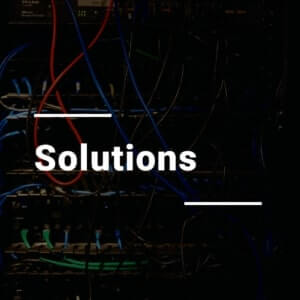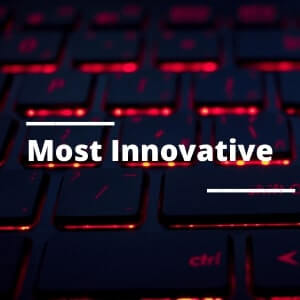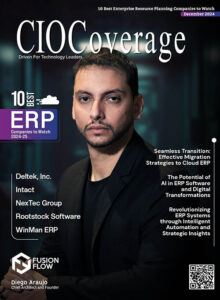The power of the Space is unblocked with the power of Azure (AI, Data Fabric and a Rapid Development environment)
 The Purpose of Microsoft, The Microsoft’s mission to empower every person and organization in the world to achieve more, and obviously this is the same when we are talking about space. Microsoft investments in cloud computing and AI are well known. We are building a massive infrastructure of compute and networking which provides 3 key principles: Global connectivity beyond the earth, End2End AI Platform, Data security.
The Purpose of Microsoft, The Microsoft’s mission to empower every person and organization in the world to achieve more, and obviously this is the same when we are talking about space. Microsoft investments in cloud computing and AI are well known. We are building a massive infrastructure of compute and networking which provides 3 key principles: Global connectivity beyond the earth, End2End AI Platform, Data security.
Specifically in the space context, we are building new space technologies together in our Azure Orbital suite of products with our industry partners (Airbus, SES, Viasat, SpaceX, KSAT, Ball aerospace, Kratos, Thales, Jubos, Orbital Insight) to connect anyone anywhere to the cloud, rapidly gain new insights from the massive amounts of space data, and develop new solutions on and off the planet in a world with toughest challenges: Global Security, Sustainability, climate changes.
Empowering various industries throughout the globe to benefit from geospatial data.
And when you choose the Azure Space portfolio, you’re also choosing an ecosystem that we’ve designed for partnership, not competition. That includes access to the Azure Marketplace, an online store that contains thousands of IT software applications and services built by industry-leading technology companies. Microsoft has a clear unique partner-focused approach.
In summary, in 2020 Microsoft created the Azure Space portfolio with the aim of combining the possibilities offered by space with the power of the cloud. Azure Space wants to offer a cloud services platform to our many partners in the space industry to offer new solutions to all our customers with three clear principles:
- Connect to the cloud anywhere and at any security level
- Turn Space data into knowledge and insights
- Enable rapid development of Space software capabilities
How does Microsoft support natural disasters?
One of our three principles in the Space context consist of unblocking access to space. Inside our Azure Orbital Suite we have AOCA (Azure Orbital Cloud Access) which is a step toward the future of integrated 5G and satellite communications enabling low-latency (1-hop) access to the cloud—from anywhere on the planet—making it easier to bring satellite-based communications into your enterprise cloud operation.
Azure Orbital Cloud Access delivers network traffic through SpaceX’s Starlink connectivity and Azure edge devices, providing customers with access to Microsoft cloud services anywhere Starlink operates. At the end, AOCA achieves resilient communications and failover capabilities with intelligent prioritized traffic through cellular, fiber or satellite.
A very good example where resilient communication is needed is the case of natural disasters: Floods, Earthquakes, volcanic eruptions, Hurricanes, tropical storms, Wildfires, landslides … These natural disaster can destroy communication infrastructure making people can’t communicate to each other effectively and this compromises the safety of civilians. In Partnership with Pegatron and SES, we explore a scenario for natural disasters that brings together 5G and space for the Hsinchu Fire Department where we are augmented first responded capabilities with intelligent apps.
What is Microsoft approach in Supply Chain Business?
Microsoft has invested in satellite data to improve its supply chain operations. In 2022, Microsoft has launched the Microsoft Supply Chain Platform, which helps organizations maximize their supply chain data estate investment with an open approach, bringing the best of Microsoft AI, collaboration, low-code, security and SaaS applications in a composable platform:
- Recommend inventory allocation
- End2end visibility products tracking
- Optimize the routes of land and maritime shipping company
- Operate more virtuously towards the commitments made to protect the environment
- Businesses identify supply chain issues more quickly
Microsoft also uses Azure Orbital and Orbital ground stations to bring geospatial data from satellites. The raw satellite data can then be processed at-scale on the cloud for analysis using various Azure services to achieve goals like Change Detection, Site Monitoring, Situational Awareness, and Entity Recognition.
Microsoft and sustainability
Microsoft has a clear vision on sustainability and has committed to being
- Carbon negative by 2030 and by 2050, we’ll remove our historical emissions since our founding in 1975.
- Water positive, we’ll be replenishing more water than we use.
- Zero waste by 2030, we’ll be zero waste across our direct waste footprint.
- Protect and preserve ecosystems, we’ll protect more land than we use by 2025 and build a Planetary Computer.
Planetary Computer, a platform available for free that allows to access, query and analysis of environmental data. More than 10PB of information from the European Copernicus constellation, NASA’s Landsat satellites and other terrestrial sources. It’s been used by hundreds of scientists and more than 700 orgs and environmentalists. Generative AI applied to satellite imagery allows to create new applications that help our customers to work more effectively:
- Air quality / Temperature of oceans / Biodiversity / control production cycles
- Audit suppliers in the agri-food industry to ensure that they comply with requirements regarding deforestation or water management
- Local authorities can improve urban planning by taking into account hydrological hazards, sea level rise or urban heat islands.
Our ambition is to enrich the database with other partners and allow our partners to create new applications thanks to our Azure AI services.
Microsoft has invested in renewable energy technologies and implemented energy efficiency practices in our operations. In addition, we have built Microsoft Cloud for Sustainability that helps organizations measure, reduce, and offset their carbon footprint and also we are working with other partners as Muon Space who is launching a new generation of sensors that monitor Earth’s climate and ecosystems (partnering directly with Microsoft’s sustainability product team) to develop products targeting enterprise environment social governance.
How does space help in cybersecurity?
In the past year, cyberattacks have touched 120 countries, 40% targeted NATO members and the rest private/government critical infrastructure (i.e Russian intelligence on espionage activity, North Korean stealing hundreds of millions of cryptocurrency, China using spying campaigns, etc). Microsoft operates some of the world’s most used software, making it a prime target for cyberattacks from criminals and nation states.
The only secure defense will be a collective defense. Attackers are already using AI as a weapon to refine phishing messages and improve influence operations with synthetic imagery. But AI will also be crucial for successful defense, using Gen AI we could generate natural language insights and recommendations from complex data, helping make analysts more effective in detection, response, analysis, and prediction.
Microsoft recognizes the importance of cybersecurity in space:
- Investing over $20B from 2021 till 2026 (x4 times more).
- A team of more than 3,500 global security experts across 77 countries interpreting and getting insights gained from our advanced engineering and telemetry.
- Offering $150 million in technical services to governments and expands its partnerships for cybersecurity training programs.
- 2021 Jun – Microsoft were the first Hyperscale as a founding member of the Space Information Sharing and Analysis Center (ISAC), which advances the protection of space-based critical assets vital to government agencies and the global economy. Through our membership in the Space ISAC, we share our unique global threat insights to protect critical infrastructure and strengthen cybersecurity expertise in the space community.
- 2023 Nov – Microsoft has announced a new initiative called the Secure Future Initiative (SFI) to pursue the next generation of cybersecurity protection. The main points are: 1.- AI-based cyber defenses: using AI to advance its threat intelligence, detection, and response capabilities, collaborating with governments and customers to build AI-based cyber shields for countries and organizations. (i.e $3.2B to extend our hyperscale cloud computing and AI infrastructure in Australia, including the development of the Microsoft-Australian Signals Directorate Cyber Shield (MACS)). 2.- Advances in software engineering: new standard for security by transforming the way Microsoft develops software and improving vulnerability response and security updates for its cloud platforms. 3.- Advocacy for international norms: In Digital Geneva Convention (2017) were defined a set of principles and norms that would govern the behavior of states and non-state actors in cyberspace and protect civilians from cyber threats in cyberspace and the spirit & principles of this Convention (6 years later) are stronger than ever.
How does Microsoft use Satellite data?
Microsoft sees artificial intelligence as a means to help us solve the increasingly complex problems that today’s world is facing. Getting rapidly rich insights from Space Data is crucial to reduce time to action. For that reason we are working with our partner ecosystem to operate their satellites directly from the cloud, through our Azure Orbital Ground Station, more reliably at lower cost and latency to get the latest innovation in terms of analytics, AI and applications, from Azure. Some examples:
- Pixxel: building constellations of hyperspectral earth imaging satellites and analyzing them. Pixxel streams data directly to Azure Cloud and then further it using Azure AI services portfolio to generate customer business insights.
- AI4EO With this goal in mind, we have launched, together with ESA Phi-Lab and Thales Alenia Space, the AI4EO (AI for Earth Observation) Challenge, which will allow the winning teams to install their AI applications directly on board the International Space Station, which will host an Azure Edge Computing module, and thus monitor the health of our planet in real time.
- Loft Orbital: space infrastructure company simpliying access to space as a service. Mission is to deploy apps from earth to space. (MSFT, AI, Cloud, Developers). The goal is to make every developer a space developer. We are building the first Azure-enabled Loft satellite. This would allow the deployment of software apps onto space hardware within the Azure environment.
In summary, From Microsoft, we are fully dedicated for democratizing the possibilities of space by unlocking connectivity and data with the Microsoft Cloud to have a clear future supporting and helping the digital transformation for our customers and partners in the space industry by using the flexible, scalable compute power in Azure including a end2end GenAI platform. In this sense, I would like to write about one great example bringing the power of Azure to the Space ecosystem making Satellites ground networks open and programmable.
In partnership with SES, one of the key satellite operators, with more than 70 satellites operating in 2 orbits: CEO and MEO; we are doing something similar as we are doing with GSMA with Open Gateway framework transforming mobile networks into an universal mobile network open APIs for developers.
In the case of SES, Microsoft and SES will create the world’s first fully virtualized satellite communications ground network. A virtualized architecture (Software-defined networking) that allows for
- Quicker standardization of system interfaces which promotes more automation
- API-based control
- Cross-industry interoperability
It’s especially important in industries such as
- Aviation
- Government with stringent security and certification requirements so upgrading disparate, proprietary equipment is costly and slows the delivery of new value-added services.
- Agricultural companies perform more precise monitoring of crop health















